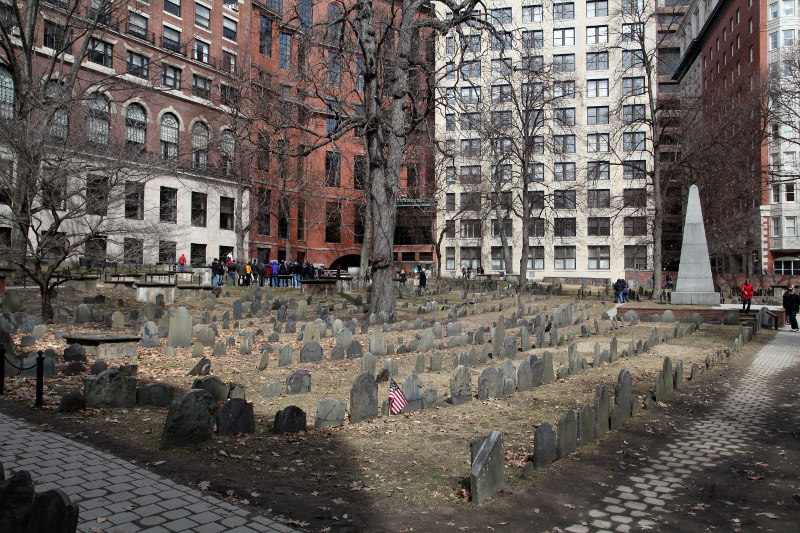The Granary Burying ground is easy to find: it’s large, it’s central, and it’s filled with people even when it’s not tourist season. A man stands outside the entrance handing people paper guides for a small fee. Cameras are constantly clicking and people are brushing past each other for a closer look at Paul Revere’s grave or pose beside Benjamin Franklin’s parents.
Whether or not the person you are looking for is actually under the headstone is another story. This 17th-century graveyard did what every other historical destination does upon the invention of the lawnmower and pathways: they moved the headstones to make it easier to mow the grass and get around. One day I’d love to get my hands on a small ground-penetrating radar unit so I can see what it really looks like under the surface in some of these places.
We already knew which graves to seek out because many of the people mentioned in previous posts are buried here: Samuel Adams, John Hancock, Paul Revere, Peter Faneuil, and the victims of the Boston Massacre. We looked for elaborate skulls, grim Puritan symbols, and interesting epitaphs that made us giggle.
However, we found the grave of one person who hasn’t been mentioned until now: Mary Goose.
There is a tremendous amount of controversy and speculation surrounding this grave because it’s said that this is the grave of Mother Goose. I personally always thought Mother Goose was a fictitious person used to personify a compilation of European stories. Most rhymes in the Mother Goose collection involve historical events that go back centuries before the arrival of Europeans in North America.
As it happens, local lore claims this person was one of the wives of Isaac Goose, a man who married twice and had a total of 16-20 children (the numbers vary depending on the source). And, one of these wives (could be Mary or could be his second wife Elizabeth) sang songs to these children that were eventually gathered up and published by a son in law named Thomas Fleet.
Either way, the grave is elaborate, cute, and comes with a great story.
What’s amazing to me is that these nursery rhymes are still around. We live in a media crazy world where we can’t even keep up with change and yet our children are still singing songs about bridges falling down, the black plague, and the royal taxation of wool.
